#tropical frog
Explore tagged Tumblr posts
Text


New art! “Life Will Go On Glow Frog”. I love making art so much, I’m so glad to be getting back into it! It really helps my mental health
My original art made in Procreate, image description in alt text
#transcendragon art#frog#frog art#glow frog#original art#yellow frog#bright frog#procreate art#artists on tumblr#digital art#fantasy art#nature#positive affirmation#positive art#gentle reminder#reminder art#affirmation#affirmation art#encouraging art#compassionate reminder#tropical frog#new art#human artist#queer artist#glow art#warm glow#glowing#glowing eyes#image description in alt#described art
90 notes
·
View notes
Text
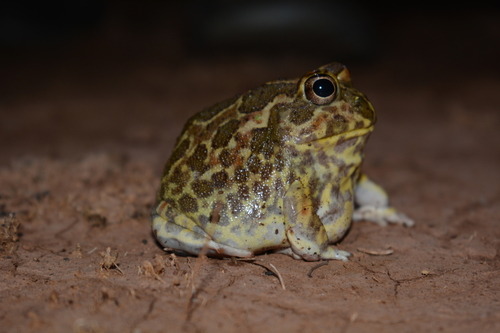
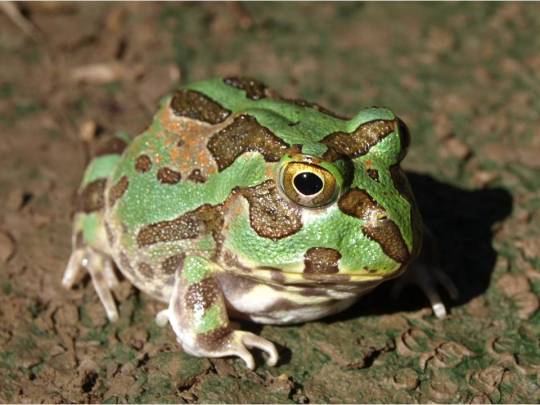
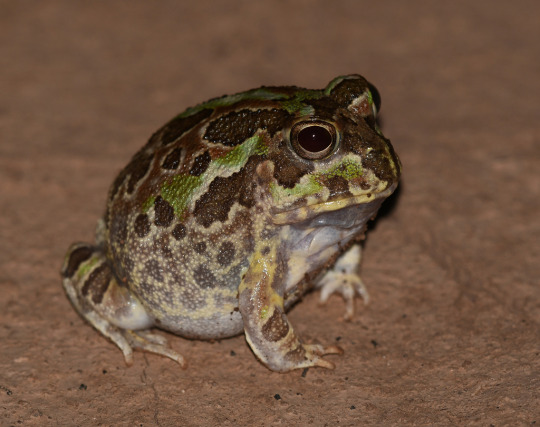
Chatting with the Chaco Horned Frog
The Chacao horned frog, also known as the lesser Chini frog (Chacophrys pierotti) is a species of horned frog found in central South America, from northern Argentina to Paraguay and Bolivia. It resides in an area known as the Gran Chaco or Dry Chaco, named for its high temperatures and lack of rainfall. Within this region, the Chaco horned frog resides mainly in dry scrubland, floodplains, and dry tropical forests.
Due to the extreme environment in which they live, lesser Chini frogs spend most of the year underground. During the cool, dry season from May to September, adults dug burrows and hibernate; to keep themselves moist, they surround themselves in a cocoon of dead skin. Once the rainy season begins in October, they emerge to feed and breed. Like most frogs, the diet of C. pierotti consists mainly of insects; particularly beetles, ants, bees, butterflies, and moths, and occasionally smaller frogs or tadpoles. There is no record of predators targeting this species, though their small size likely makes them an easy target for foxes, coyotes, and opossums.
At only 4.5 - 6.5 cm (1.7 - 2.5 in) long, lesser Chini frogs are on the small side. However, they generally appear rather plump and round-- the better to retain moisture during the dry season. Adults can appear mottled brown or green, which helps them to camouflage against the surrounding foliage. Despite their name, Chaco horned frogs have no horns or similar-looking appendages.
Mating occurs throughout the rainy season, and typically peaks in January. Males attract females by calling, especially just after heavy rains. Females lay their eggs in the rivers and temporary lagoons that form, and the larvae hatch some time later. Tadpoles only take about 2 weeks to metamorphose into adults, and by the following rainy season they are ready to mate. Individuals typically only live to be about 5 years in the wild.
Conservation status: The IUCN has classed C. pierotti as Least Concern. However, it is threatened by habitat loss due to agriculture and deforestation, and by collection for the pet trade.
Photos
Nadia Bach
Norman Scott
Josh Vandermeulen
#chacao horned frog#Anura#Ceratophryidae#common horned frogs#frogs#amphibians#grasslands#grassland amphibians#tropical forests#tropical forest amphibians#south america#central south america
89 notes
·
View notes
Photo

Red-Eyed Tree Frog Looking Over a Flower
Image by Mark Kostich /Getty Images
130 notes
·
View notes
Text

Tree frog (Boophis madagascariensis) in the Peyrieras Madagascar Exotic Reserve
24 notes
·
View notes
Text

Executioner clown frog (Dendropsophus carnifex)
Photo by Joao Burini
#Dendropsophus carnifex#executioner clown frog#executioner tree frog#hangman swamp frog#frog#tropical frogs#amphibians#colorful frogs#colorful amphibians#nature#animals#wildlife
14 notes
·
View notes
Photo
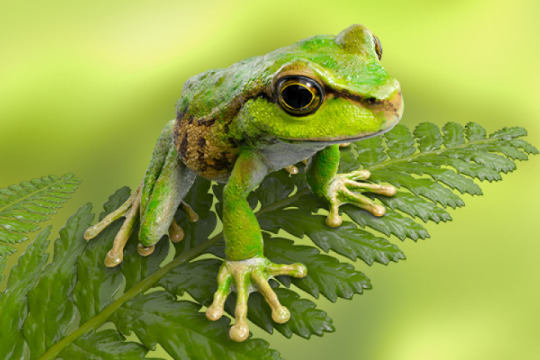
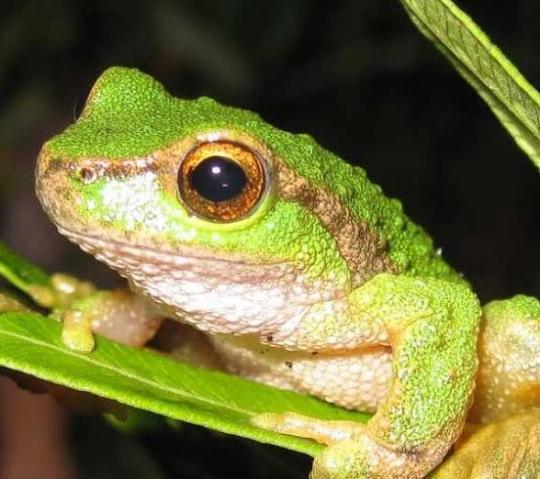

Spotted Tree Frog (Litoria spenceri), Mount Beauty, Victoria, Australia
#tropical#frogs#tree frog#spotted tree frog#australian frogs#amphibian#wildlife#nature#victoria#mount beauty#rainforest#rivers#jungle#australia
67 notes
·
View notes
Text









Check out ✦ THIRD WORLD PUNKS ✦ for more alternative dark academia mood boards!
#dark academia aesthetic#twp aesthetic#third-world punks#aesthetic#latin america#tropical#south america#tropicore#nature#rainforest#studyblr#tropical dark academia#dark academia#dark academia moodboard#dark academia vibes#dark academic aesthetic#dark aesthetic#gothic#tropical academia#tropical aesthetic#third world punks aesthetic#third world punks#punk aesthetic#punk academia#punk#chaotic academia#light academia#alternative academia#global south#poison dart frog
33 notes
·
View notes
Text

8 notes
·
View notes
Text
i do not understand people who struggle to get in the shower. it's basically my favorite place. i am pretty sure my ancestors were those monkeys who live in the hotsprings.
9 notes
·
View notes
Photo

Blue morph of the Strawberry Poison-frog (Oophaga pumilio) from Panama’s Bocas del Toro province. Photo by Ignacio Yúfera.
208 notes
·
View notes
Text
youtube
Many of the world’s most beloved frogs and amphibians are headed for extinction, but inside “The Ark” in Panama, some of those threatened species are given a fighting chance. Using innovative technology and breakthrough genetics, researchers have ignited a cadre of solutions to save these rare and cherished species.
The Ark at the Smithsonian Tropical Research Institute in Panama houses hundreds of large, captive communities of frogs, some of which no longer exist in the wild. Here, scientists hope to bring these species back from the brink of extinction and solve the world’s worst wildlife pandemic: an amphibian-killing fungus known as chytrid.
In a quarantined lab, these biologists bathe frogs in fungicide and hope to spark a viable immune response from the captive animals. Meanwhile, in the field, other researchers use artificial intelligence to listen to frog songs and identify so-called “lost frogs” that survive chytrid in the wild — any of which may hold the key to fighting the disease. Safeguarding a future for frogs isn't easy, but these tactics in Panama have been so successful that they’re being replicated in facilities across the globe. The effort may seem monumental, but the safety and preservation of amphibians worldwide hangs in the balance.
#Nature on PBS#solarpunk#frogs#panama#fungus#chytrid#extinction#cw dead animal#tw dead animal#Smithsonian Tropical Research Institute#The Ark#Youtube
14 notes
·
View notes
Text

Happy First Day of Summer!
Souce: adam807
#the muppet show#the muppets#kermit the frog#miss piggy#scooter#ukelele#ukelele lady#summer#tropical#muppet#muppets#gif#muppets gif#muppet gif#gifs of puppets
128 notes
·
View notes
Text
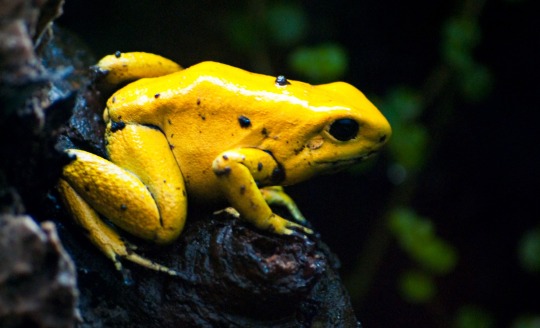
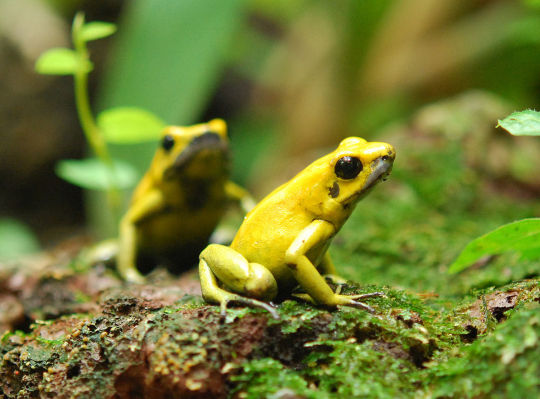

Golden Poison Frogs: The Gold Standard
Golden poison frogs (Phyllobates terribilis) are a species of frog found only along the Pacific coast in the Amazon Rainforest of Columbia; their total range encompasses less than 5,000 square km;. Their prime habitat is near rivers, streams, and ponds, but the are able to survive in a variety of microhabitats along the forest floor thanks to the forest's extremely warm, humid climate.
The golden poison frog is perhaps noted for its crowning as the most poisonous species on the planet. A single adult contains enough poison in its skin to kill 2-3 grown humans, although the frog would have to be ingested for its toxins to be fatal. However, there is at least one species of snake, the fire-bellied snake (Erythrolamprus epinephalus) which is immune to the frog's toxins and often predates on juveniles. P. terribilis consumes a variety of insects, but gets its poison from the beetles in its diet, and without them individuals lose their toxicity.
Although tiny, the golden poison frog is hard to miss. They are the largest species of poison frog at a weight of 30 g (1 oz) and a length of 6 cm (2.4 in). Females are usually larger than males. The species is named for the most common color moroph, bright yellow, but populations may also come in green, orange, and white. The coloration is a warning to predators to stay away.
Golden poison frogs are typically active during the day. Members of the same sex are highly territorial, but populations within a small area can be quite large. Individuals defend their territory by calling loudly and performing a push-up motion, which can also serve to attract potential mates. The species can reproduce year-round, and both males and females have multiple partners.
After the female has laid a clutch of about 20 eggs, the male carries them on his back up a tree to a bromeliad or small tree hole filled with water. There the eggs hatch as tadpoles after 11-12 days. The tadpoles feed on algae and insect larvae until they metamorphose into froglets, which takes about 2 months. The froglets take a further year to fully mature, and adults may live for up to 5 years.
Conservation status: P. terribilis is classified as Endangered by the IUCN. The species has a relatively small home range, and is seriously threatened by habitat loss. However, there are many private, government, and NGO captive-bread populations across the globe.
Want to request some art or uncharismatic facts? Just send me proof of donation of any amount to any of the fundraisers on this list, or a Palestinian organization of your choice! Proof does not have to include any personal info– only the date, the amount, and the recipient. Even one dollar can go a long way!
Photos
Victor Fabio Luna-Mora
Micha L. Rieser
Leighton Pritchard
#golden poison frog#Anura#Dendrobatidae#poison dart frogs#frogs#anurans#amphibians#tropical forests tropical forest amphibians#tropical rainforest#tropical rainforest amphibians#south america#northern south america
64 notes
·
View notes
Text

shhh…he’s sleeping…
#my post#goblincore#naturecore#forestcore#rainforest#green#plants#tropical#jungle#leaves#frog#tree frog#latin america#costa rica
9 notes
·
View notes
Text

poison dart frog, amazon rainforest by Daniel Carmona
29 notes
·
View notes
Text
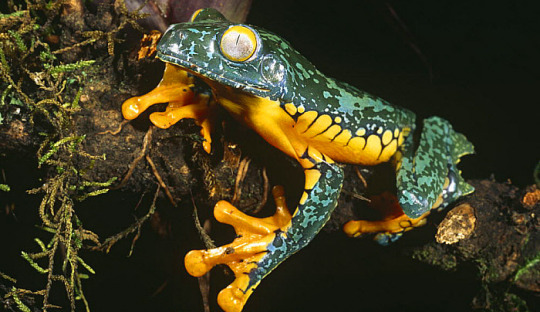
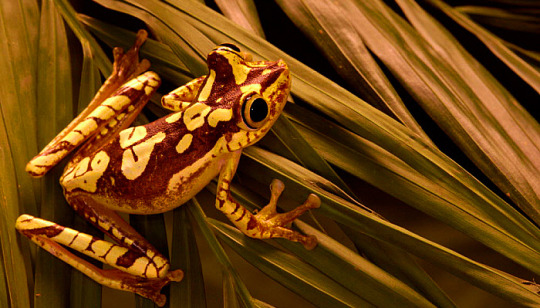




Ecuadorean frog photos by Pete Oxford
Leaf frog (Agalychnis craspedopus)
Chachi tree frog (Hyla picturata)
Poison arrow frog (Epipedobates tricolor)
Poison arrow frog (Epipedobates tricolor)
Poison arrow frog (Dendrobates duellmani)
San Lucas marsupial frog (Gastrotheca pseustes)
#frogs#tropical frogs#ecuador#agalychnis#Agalychnis craspedopus#hyla#hyla picturata#Epipedobates tricolor#epipedobates#dendrobates#dendrobates duellmani#gastrotheca#gastrotheca pseustes#leaf frog#chachi tree frog#tree frog#poison arrow frog#san lucas marsupial frog#amphibians#rainforest#tropical rainforest#blue frog#red frog#green frog#black frog#yellow frog#brown frog#animals#wildlife#nature
267 notes
·
View notes